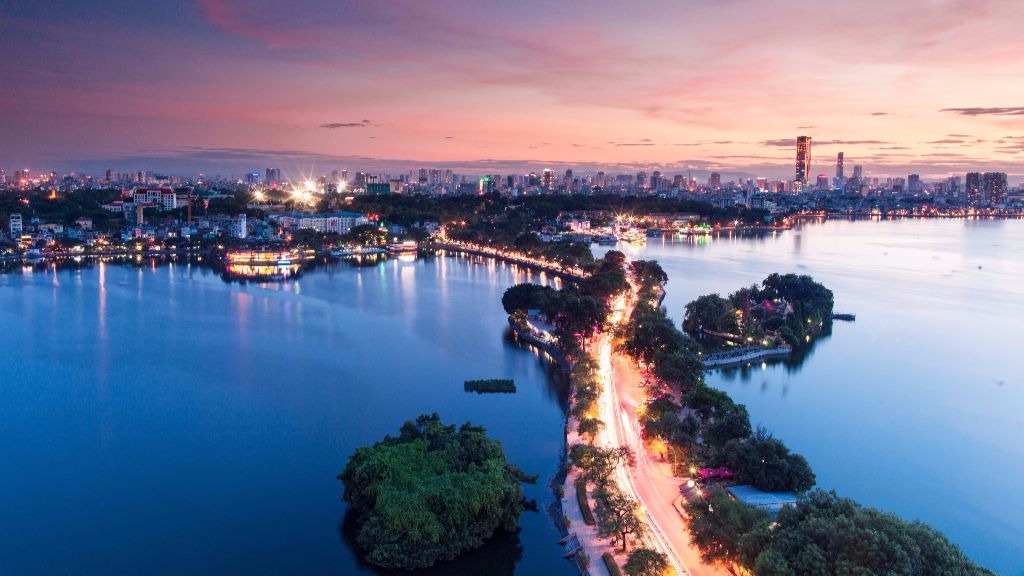
What to Expect from the 6th GMS Summit in Viet Nam
Leaders of the six countries that share the Mekong River will gather in Viet Nam's capital Ha Noi for the 6th Greater Mekong Subregion (GMS) Summit on 31 March 2018. They are expected to adopt an action plan that provides the directions and operational focus for the remaining 5 years of the GMS Strategic Framework and approve a rolling pipeline of projects until 2022 worth more than $60 billion. The 5-year plan includes strengthening links between rural and urban areas in the subregion.
The theme of the summit is "Leveraging on 25 Years of Cooperation, and Building a Sustainable, Integrated, and Prosperous GMS."
Cambodia, People's Republic of China (specifically Yunnan Province and Guangxi Zhuang Autonomous Region), Lao People's Democratic Republic, Myanmar, Thailand, and Viet Nam launched the Greater Mekong Subregion Economic Cooperation Program in 1992, with assistance from the Asian Development Bank (ADB), to enhance economic relations. The GMS Program is a leading example of how regional cooperation can deliver successful results over the long term. More than $20 billion in investments have been directly channeled through the program.
Schedule of events
This is the first time Viet Nam will be hosting the GMS Summit. It will also host three other related events prior to the summit.
On 29 March, a GMS Senior Officials Meeting will review deliverables and preparations for the leaders' summit.
A GMS Business Summit will be held on 30 March to provide an opportunity for the GMS leaders, heads of international organizations, development partners, business sector, and academia to share their views on key development issues of the subregion and discuss ways to strengthen cooperation among stakeholders.
The Government of Viet Nam will also host a gala dinner for the summit on 30 March.
The 6th GMS Summit on 31 March comprises two events. The Leaders' Retreat is a closed-door meeting that will be attended by heads of government and other high-ranking officials of the GMS countries, and ADB President Takehiko Nakao. They will then proceed to the plenary session, which is open to senior officials, business leaders, development partners, and the media.
Expected outputs of the summit
The GMS leaders are expected to formally adopt the Ha Noi Action Plan 2018–2022 and the Regional Investment Framework 2022, which were endorsed for approval by GMS ministers in September. They will also issue their joint declaration for the summit at the plenary session.
The Ha Noi Action Plan 2018–2022 calls for an expansion of economic corridors to boost connectivity between countries as well as within rural and urban centers to ensure a more equitable distribution of the benefits of economic growth. Its key thrusts include refined sector strategies and priorities; improved planning, programming and monitoring systems; and enhancements in institutional arrangements and partnerships.
The Regional Investment Framework 2022 supports the 5-year action plan through a rolling pipeline of more than 200 investment and technical assistance projects.
New strategies for agriculture, environment, tourism, and transport will also be presented to GMS leaders.
The Strategy for Promoting Safe and Environment-Friendly Agro-Based Value Chains in the Greater Mekong Subregion and Siem Reap Action Plan 2018-2022 will build a region-wide food safety system and strengthen value chain integration involving smallholder farmers, rural women, as well as small and medium-sized agro-enterprises.
The Core Environment Program Strategic Framework and Action Plan 2018–2022 includes more than $540 million worth of priority projects to spur green investments and increase environmental cooperation to help the subregion achieve sustainable growth.
The GMS Tourism Sector Strategy 2016–2025 calls for more competitive, balanced, and sustainable destination development.
The new GMS Transport Sector Strategy aims to build a seamless, efficient, reliable, and sustainable transport system. This will be achieved through the improvement of the subregion’s links with South Asia and other parts of Southeast Asia, better cross-border transport, strengthened intermodal transport links and logistics development, as well as enhanced road safety.
Follow #GMS25 on Facebook and Twitter. Find out how you can join the conversation at the GMS Summit.
